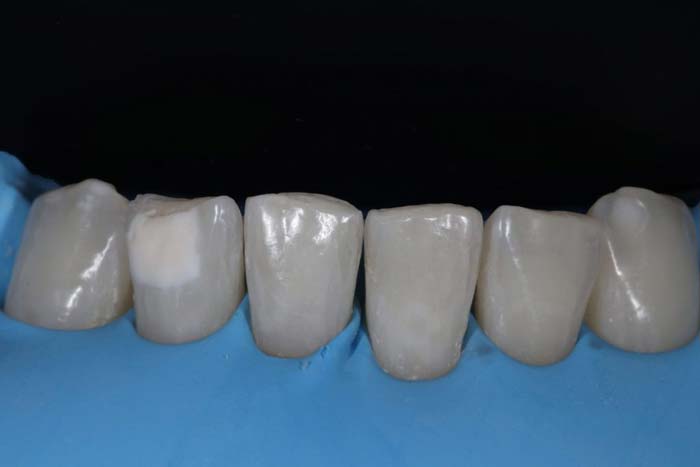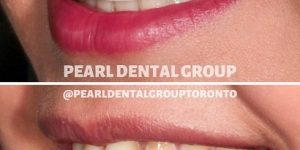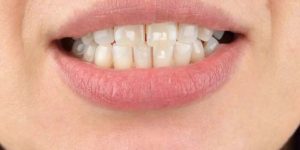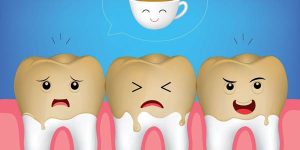White Spots on Teeth? Don’t Worry! Here’s Why They Appear and How to Deal with Them
We all want a nice, healthy smile. However, sometimes we get those annoying white spots on our teeth, which can make us worry about how our smile looks and our oral health. These spots can be different sizes and spread out in different ways, from barely there to really noticeable. Even though they might stress us out, knowing why they show up can help us deal with them better.
In this blog post, we will explore the different factors that can lead to white spots on teeth, discuss potential treatment choices, and stress the importance of seeking advice from a dental expert. By the end, you will have the knowledge necessary to effectively address these spots and maintain a smile that exudes confidence.
Read More: Toronto Cosmetic Dentist
Causes of White Spots on Teeth
White spots on teeth might not be just a cosmetic issue. In fact, they can give you some valuable insights into what’s going on beneath the surface. Let’s explore the usual suspects behind these white marks. For top-notch dental care, the dentist in Toronto can be found at Pearl Dental Group.
A: Fluorosis: A Balancing Act
Fluoride is a mineral that’s often used to help make our tooth enamel stronger and stop cavities from forming. But if kids have too much fluoride when their teeth are still developing, it can result in fluorosis. This can cause white patches or uneven spots on their teeth.
- The Good and the Not-So-Good:
Remember, it’s crucial to maintain a moderate level of fluoride for healthy teeth. Public water fluoridation and using fluoride toothpaste are both effective in preventing cavities, especially in young children. The recommended amount of fluoride can vary depending on age and individual needs. Seeking guidance from your dentist or pediatrician can help determine the appropriate level of fluoride for your child.
- Shades of Fluorosis:
Mild and moderate types of fluorosis often show up as white spots on the teeth, which are mostly just a cosmetic issue. However, if fluorosis becomes severe, it can lead to noticeable discoloration and even impact the development of the teeth. In severe cases, the enamel may have a rough or pitted appearance, and the teeth may become more prone to chipping or breaking.
B: Enamel Hypoplasia: When Development Goes Awry
Enamel hypoplasia happens when the tooth enamel doesn’t fully develop, causing white spots or rough areas on your teeth. The condition can range from minor white marks to more serious defects that impact the entire tooth surface.
What Triggers Hypoplasia?
Enamel hypoplasia may result from different factors, including:
- Childhood illnesses: Having a high fever while your teeth are growing can cause problems with how your enamel forms. This is because the cells that are responsible for making enamel might not work properly when your body temperature is too high.
- Nutritional deficiencies: Not getting enough important vitamins and minerals during childhood, like calcium and vitamin D, can impact how your enamel develops. Calcium is essential for enamel, and vitamin D helps your body absorb calcium.
- Genetics: Some people may have a genetic predisposition to enamel hypoplasia. This means they are more likely to develop the condition, even if they haven’t experienced other contributing factors.
C: Plaque Buildup and the Demise of Enamel
Plaque is a sticky layer that builds up on your teeth from food bits and bacteria. If you don’t brush and floss properly, plaque can make acids that destroy your tooth enamel. This can show up as white spots, especially at first. If you don’t take care of it, those white spots could turn into cavities as the enamel gets weaker.
D: Beyond the Usual Suspects: Other Potential Causes
Apart from the usual causes, there are a few extra factors that can result in white spots on teeth.
- Tooth trauma: Accidents or injuries to teeth can damage enamel which may cause white spots on your teeth where the impact happened. The degree of whiteness in the spot depends on the extent of the enamel damage.
- Medications: Certain medications taken during childhood, such as tetracycline antibiotics, can affect tooth development and cause white spots. It’s important to discuss any medications your child is taking with your dentist in North York so you can be aware of any potential side effects.
- Environmental factors: Too much exposure to specific environmental factors, like too much fluoride in well water, can cause white spots on teeth. You can check with your local health department to find out about fluoride levels in your water.


Treatment Options for White Spots on Teeth
White spots on your teeth may not always need immediate treatment. But having knowledge about the available treatment options can help you have a constructive discussion with your dentist to determine the best way treatment option.
- Monitoring and Maintaining a Healthy Smile
In the case of mild white spots, especially if they’re caused by mild fluorosis, you might not need any treatment. However, it’s extremely important to maintain excellent oral hygiene. Don’t forget to brush your teeth twice a day using fluoride toothpaste and make sure to floss regularly. By doing so, you can remove plaque and prevent additional enamel erosion, which could potentially make those white spots less noticeable.
- Microabrasion: A Gentle Buffing Technique
Microabrasion is a simple non-invasive procedure that can help fix small enamel flaws, like white spots. The dentist uses a special paste to gently remove the discolored area by buffing away the outer layer of enamel. It’s a fast and efficient way to treat certain types of white spots.
- Masking the Spots: Tooth Bonding and Resin Infiltration
For more noticeable white spots, tooth bonding offers a cosmetic solution. Dentists use a tooth-colored resin material to cover up the white spot and make it blend in perfectly with the rest of your tooth. This cosmetic solution is a seamless way to improve the appearance of your teeth.
A newer technique known as resin infiltration is gaining popularity for treating deep white spots. This minimally invasive procedure involves using a special resin to penetrate the enamel and harden, effectively hiding the white spot from within.
- Veneers or Crowns: Addressing Significant Issues
In cases where white spots on your teeth are severe, large, or if your enamel is weakened, your dentist might suggest getting dental veneers or crowns. Veneers are thin shells made of porcelain or composite material that are attached to the front of your tooth to hide the white spots and enhance the appearance. Crowns, on the other hand, are more extensive restorations that cover the entire tooth, offering structural support and a natural-looking cosmetic result.
The best way to decide on the right treatment for your white spots is by considering their severity and underlying cause. It’s crucial to consult a dentist who can provide an accurate diagnosis and personalized recommendations.
Read More: How Much Are Veneers?
Seeking Professional Guidance: When to See a Dentist
When you see white spots on your teeth that are concerning in size, color, or if they’re causing discomfort, it’s best to schedule an appointment with a dentist. Moreover, if the spots come with pain or sensitivity, seeking professional evaluation is essential. A dentist can accurately diagnose the cause of the white spots and suggest the most suitable treatment plan for removing the irritating white spots.
Read More: Family Dentist in Toronto
Let’s Wrap it Up
White spots on teeth can be a source of aesthetic concern. However, understanding the underlying causes and available treatment options empowers you to take control. Remember, maintaining good oral hygiene is vital for preventing future issues.
Consulting a dentist for a proper diagnosis and treatment plan is the key to achieving a healthy and pleasing smile. At Pearl Dental Group we have been removing white spots for years. Don’t hesitate to schedule an appointment to discuss your concerns and reach the full potential of your smile.
White spots on teeth can be caused by various factors, including:
- Excessive fluoride intake during tooth development (fluorosis)
- Enamel hypoplasia or developmental defects
- Poor oral hygiene leading to plaque buildup
- Acid erosion from acidic foods or beverages
- Early stages of tooth decay (demineralization)
White spots on teeth can often be treated effectively through professional dental procedures. At Pearl Dental Group, we offer several treatment options, including:
- Dental fluorosis treatment
- Microabrasion or enameloplasty
- Dental bonding
- Dental veneers
Dental fluorosis treatment aims to reduce the appearance of white spots caused by excessive fluoride intake during tooth development. At Pearl Dental Group, our experienced dentists can recommend various treatment options, such as microabrasion or enameloplasty, to improve the appearance of affected teeth.
Yes, dental bonding is a cosmetic procedure where tooth-colored resin material is applied to the tooth surface to conceal imperfections such as white spots. Our skilled dentists at Pearl Dental Group carefully match the bonding material to your natural tooth color, providing a seamless and aesthetically pleasing result.
Dental veneers are thin, custom-made shells that cover the front surface of teeth to improve their appearance. They can effectively mask white spots and provide a long-lasting solution for achieving a brighter, more uniform smile. Pearl Dental Group offers expertly crafted veneers to address white spots on teeth.
To prevent white spots on teeth, it’s essential to:
- Maintain good oral hygiene by brushing and flossing regularly
- Limit consumption of acidic foods and beverages
- Use fluoride toothpaste and mouthwash as recommended by your dentist
- Visit Pearl Dental Group for regular dental cleanings and check-ups to prevent dental issues that may lead to white spots.
In some cases, the appearance of white spots on teeth can be improved or minimized through professional dental treatments. However, it’s essential to address the underlying cause to prevent further damage and maintain oral health. Our experienced dentists at Pearl Dental Group can assess your condition and recommend appropriate treatment options.
While white spots on teeth can sometimes indicate early stages of tooth decay (demineralization), they can also result from other factors such as fluorosis or enamel hypoplasia. It’s crucial to seek evaluation and treatment from our dental professionals at Pearl Dental Group to determine the underlying cause and prevent potential complications.

Book Your Dental Appointment
Contact Us
Pearl Dental Group: Specializing in crafting radiant smiles and elevating dental health for over 30 years! Are you curious to know about sparkling smile secrets? We at Pearl Dental Group provide comprehensive and high-quality dental services through our expert team. Pearl Dental Group is ready to provide you with a wide range of services in both general and cosmetic dentistry. Our professional dentists prioritize your health and the aesthetics of your smile.
Pearl Dental Group provides a comprehensive range of dental services, including teeth whitening, root canal treatments, dentures, dental implants, dental crowns, gum disease therapy, dental veneers in North York, front tooth filling, dental bonding, dental bleaching, tooth extraction, and more, all delivered with the highest quality and affordability.
Book your appointment today and experience a professional dental care service in a warm and friendly place. Contact us; we are waiting for you.








